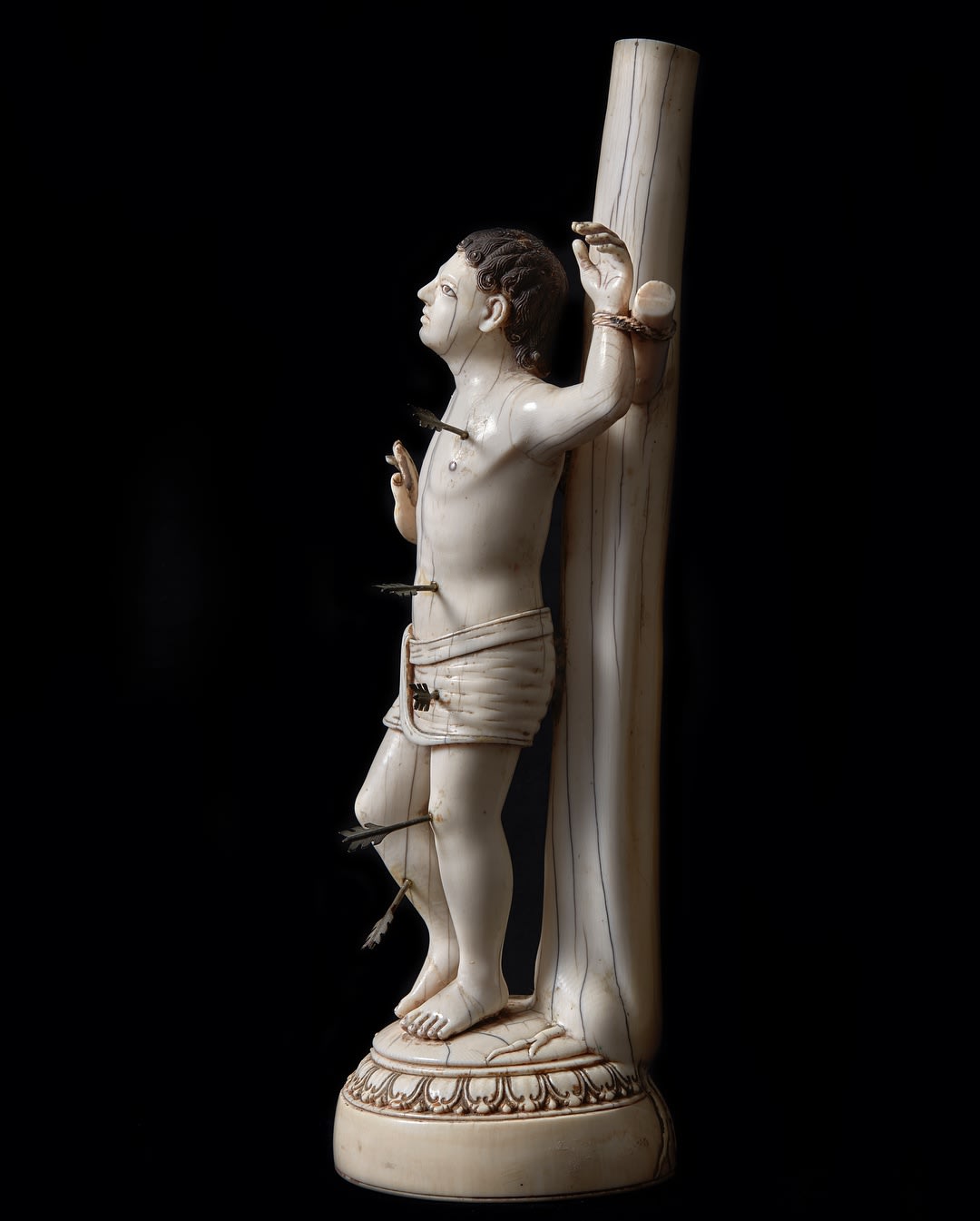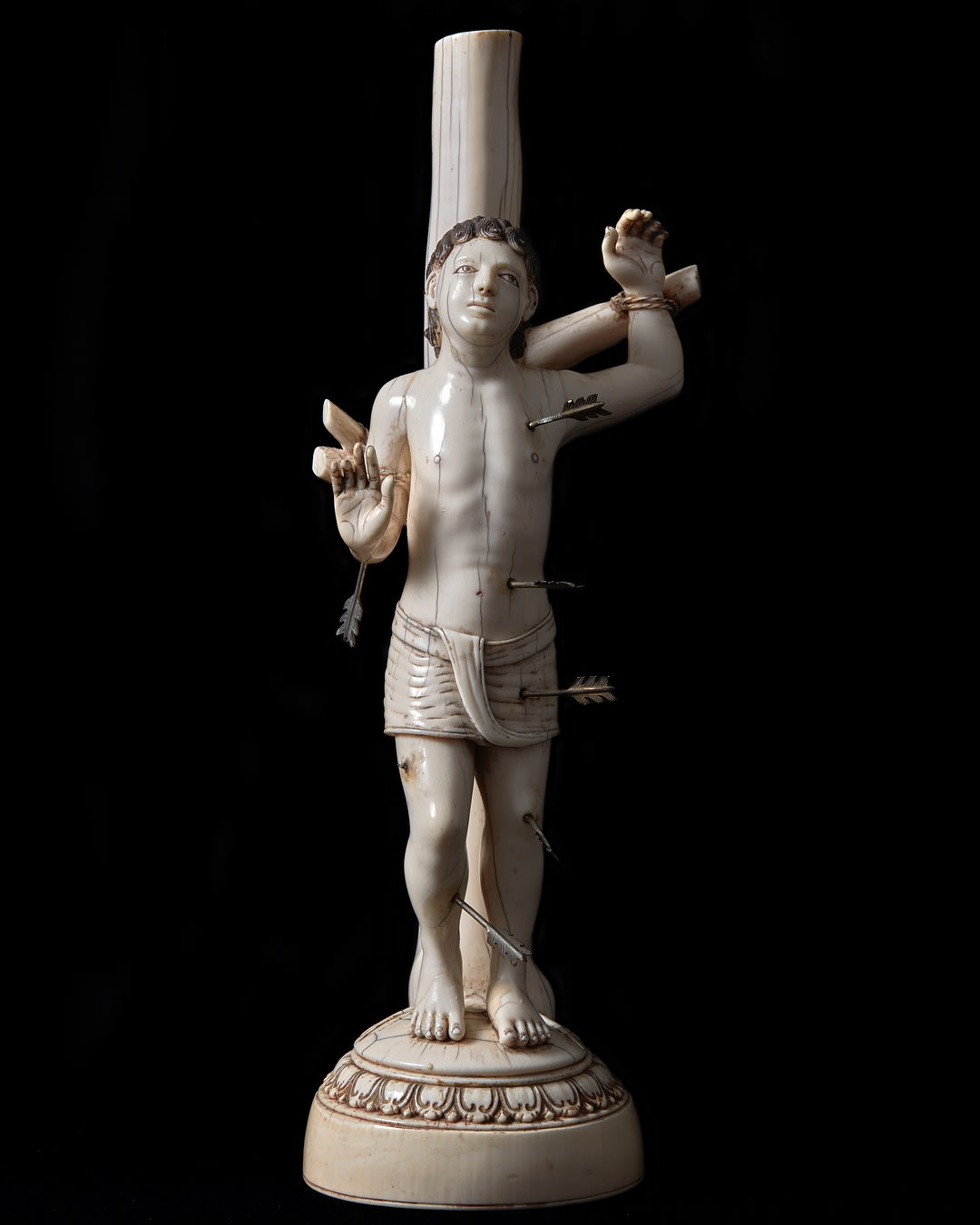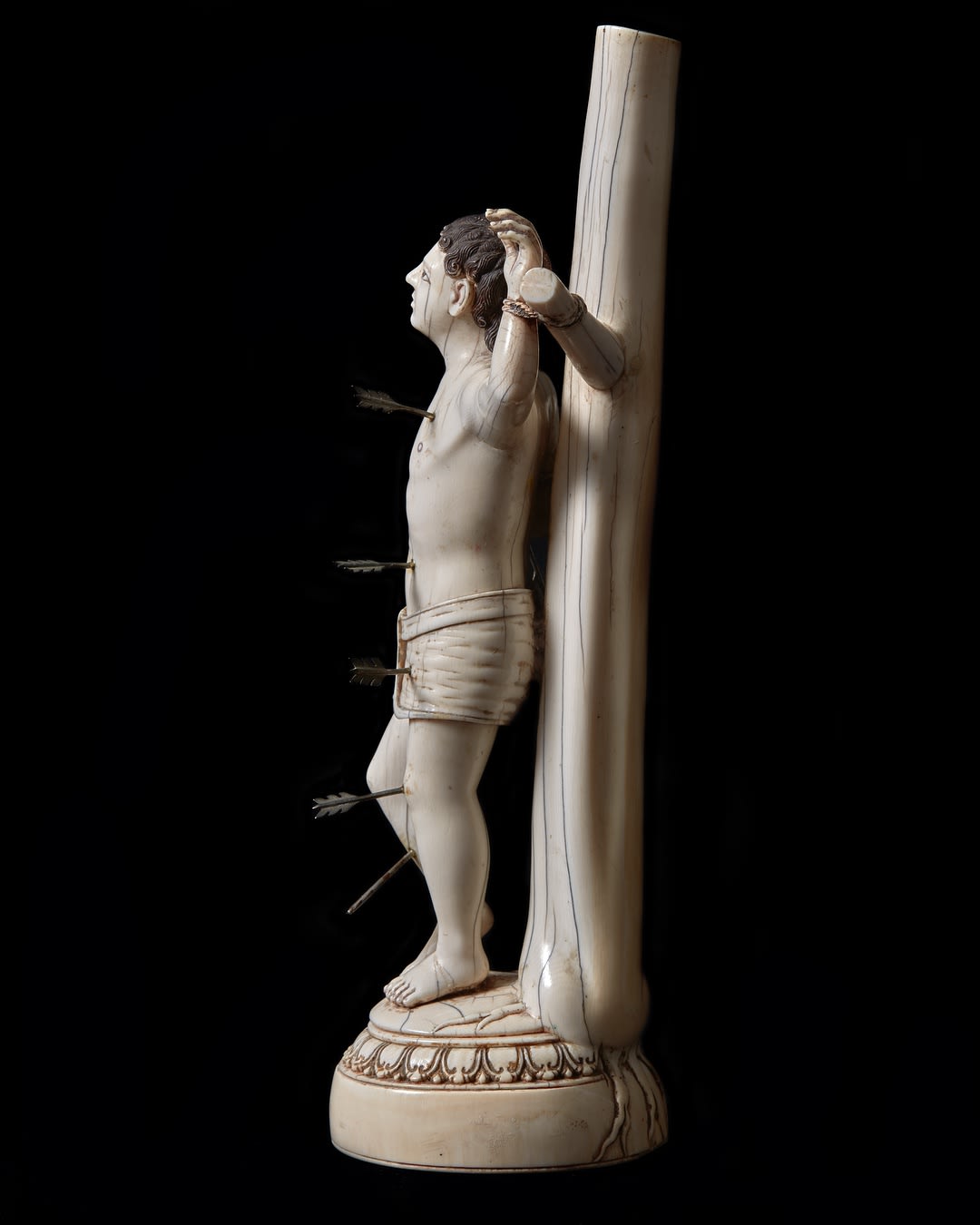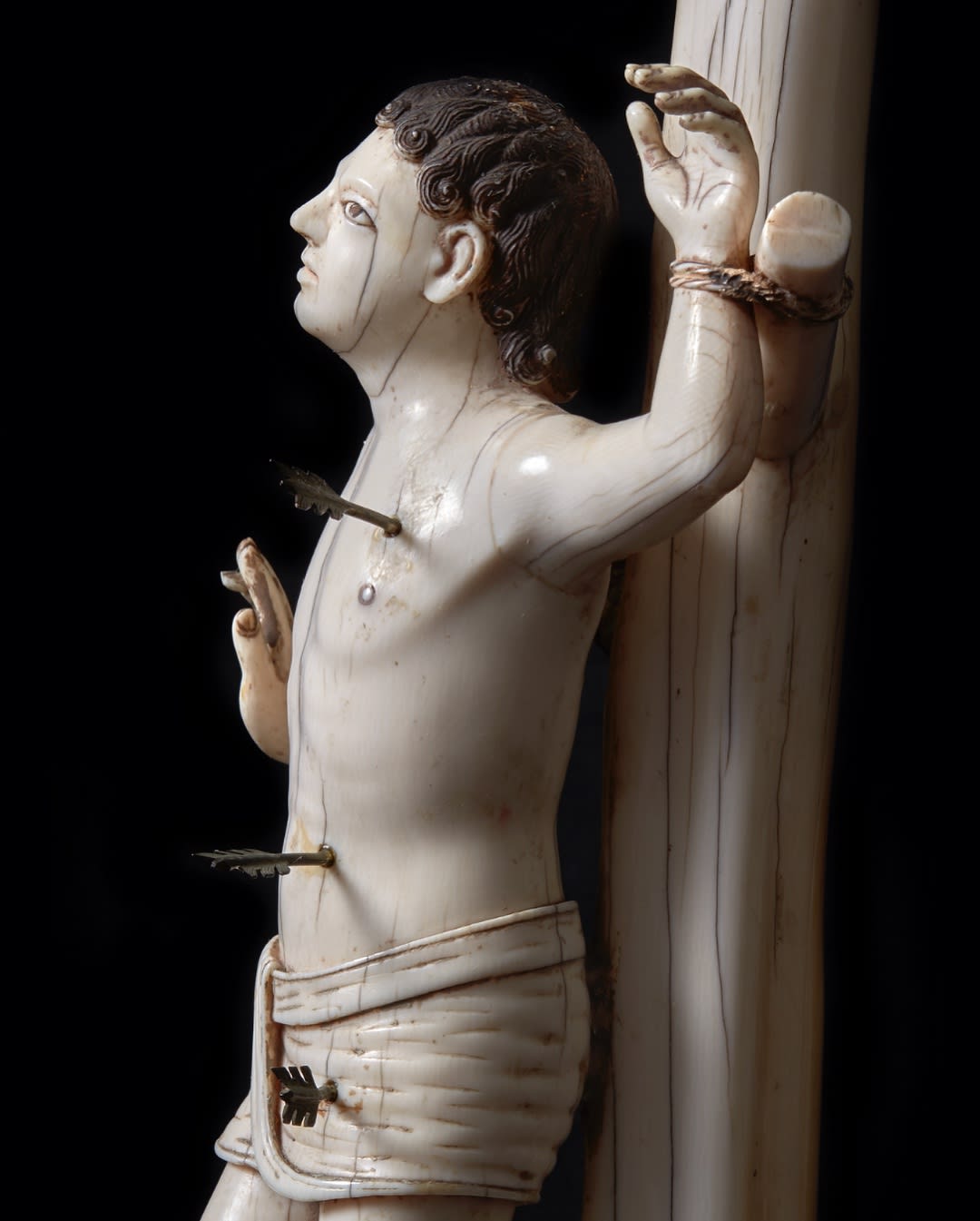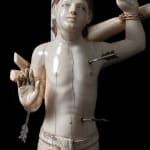Indo-Portuguese Ivory Figure of Saint Sebastian, 17th century
Ivory and silver arrows.
Further images
The fine carving of the facial features and the folds on the drapery are typical of Sri Lankan ivories. From the sixteenth-century, the Portuguese were active as traders and later as rulers in Sri Lanka (formerly called Ceylon). Ivory sculptures were locally produced in large numbers for an European clientele, and their style of carving combines Sri Lankan with European traditions.
Ivory carving had a long tradition on the Indian subcontinent, and elaborate works of art were made, particularly as diplomatic gifts, often presented to Western rulers. From the sixteenth century onwards, the four main missionary Orders, the Augustinians, Jesuits, Dominicans and Franciscans, built churches and aimed to convert the inhabitants of India. The ivories would assist in the presentation of Christian imagery, as well as being exported back to churches, convents and private collectors in Europe.

